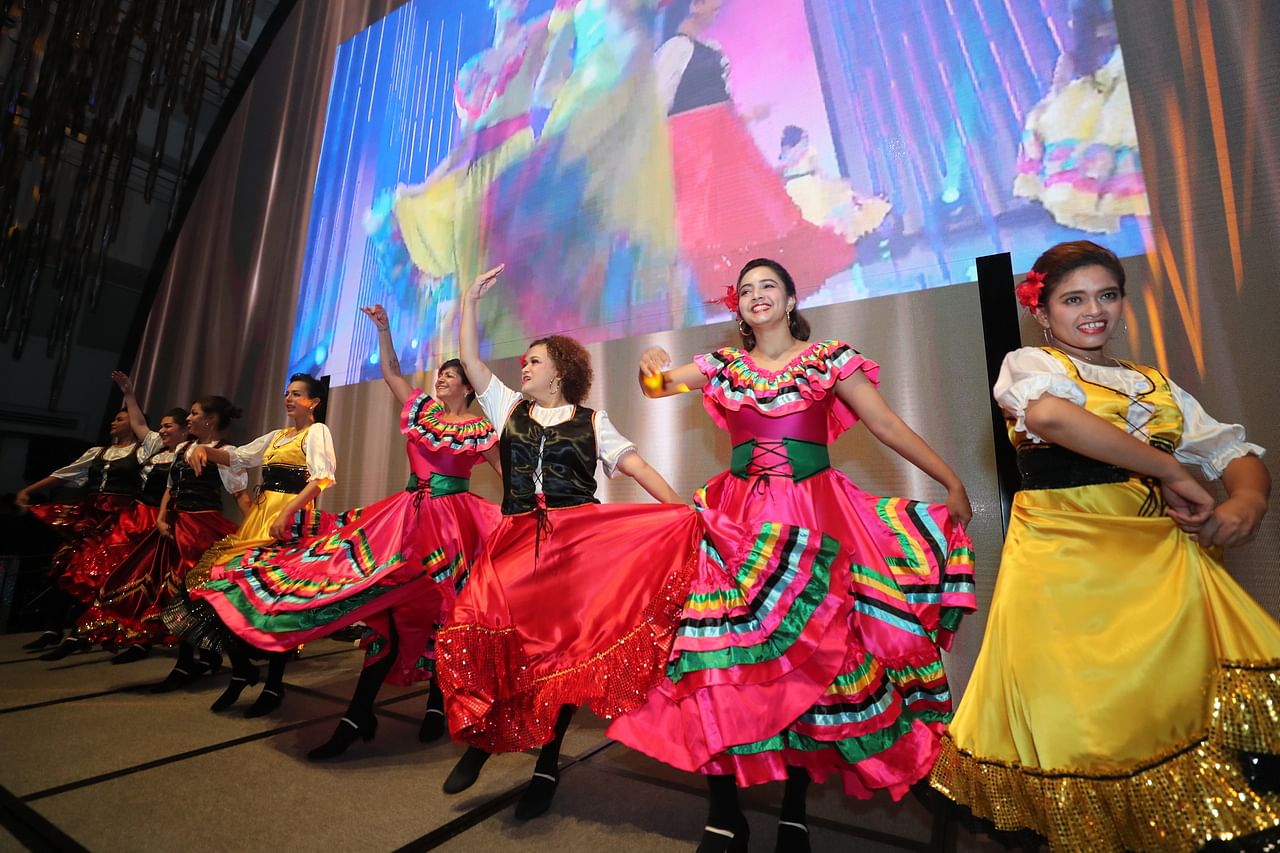SINGAPORE - Eurasians were some of the earliest settlers in Singapore in the 1800s and were among the first locals to hold high government posts after independence.
These included Speaker of the Legislative Assembly George Oehlers, the first Chief of Staff of the Singapore Armed Forces Tommy Campbell, and Commissioner of Police John Le Cain.
Many more have since made their mark in society and the economy, contributing in various fields from business and government to sports and the arts.
And the Eurasian Association, founded in 1919, continues to help the community and its less fortunate, while coming together with other communities and ethnic self-help groups, said Transport Minister S. Iswaran last month.
Mr Iswaran, who is also the minister representing Eurasians in the Cabinet, was speaking at the launch of a book commemorating the 100th anniversary of the Eurasian Association (EA).
Titled Standing The Test Of Time, the book documents the story of the association, which celebrated its 100th anniversary three years ago. Written by former Straits Times journalists Melody Zaccheus and Janice Tai, the book was published by the Straits Times Press.
The EA has 6,700 members as at April this year. Singapore's 2020 population census found about 18,000 Eurasians living here.
Eurasians in Singapore have a mixed European and Asian lineage. Most of them can trace the European part of their ancestry to the Portuguese, Dutch or British, with the Asian component usually being Chinese, Malay or Indian.
Mr Iswaran also penned a message in the book, where he said the story of Singapore's Eurasian community is the story of Singapore.
He wrote: "Our Eurasian community is quintessentially Singaporean, the embodiment of a diverse heritage that is integral to the vibrant tapestry of our society. Though small in number, Eurasians have left an indelible mark on many aspects of Singapore life."
From mixed European and Asian descent, Eurasians once occupied a privileged position in the racial politics of colonial Singapore as some were allowed by the British to hold well-paying government jobs.
This privilege quickly evaporated, however, and, as Singapore gained independence in 1965, many Eurasians faced a choice - to stay with a new country whose prospects were uncertain, or leverage what wealth they had accumulated and leave.
This extract from Standing The Test Of Time details that period of the community's history:
Adapting to a changed Singapore
After 1965, the newly sovereign government worked to flatten class and colour barriers and dismantle economic niches. As education standards improved and other Singaporeans could better access English-language schools, Eurasians began to lose their cachet. This concerned the community as it meant the loss of long-held vocations, especially those in the civil service.
Mr W. H. Mosbergen, on his election as president of the association in 1964, called upon Eurasians to learn local languages, to relinquish their expectations of white-collar jobs and to be prepared to "soil their hands".
Eurasians now had to compete on the same playing field with their fellow citizens based on the new nation's meritocratic laws and no longer had a special consideration by a British colonial patron, noted Dr Antonio L. Rappa.
Other sweeping changes, in sync with the ruling regime's de-communalisation and ethnic equality policies, were also afoot. For one, the People's Action Party (PAP) sought to deliberately enforce integration among people of different ethnicities. For example, the SRC (Singapore Recreation Club) was asked to abandon its Eurasian-only policy and the former Eurasian stronghold was opened up to all Singaporeans.
The government also required individuals with other citizenships to relinquish them for Singapore citizenship.

The government's priority was social stability, essential for economic growth and national survival. It wanted to develop, among its people, allegiance to this newly formed nation, which had historically never been independent, having functioned only as part of an empire or a country.
The concept of Singaporean nationhood was new and the immigrant populace of Singapore was expected to shed their allegiance to their hometowns.
Some Eurasians took positively to these changes. For instance, they viewed the opening up of the SRC as a contribution and gift to the Singapore sports scene. They were largely optimistic about the future of Singapore as a nation and eager to embrace their new Singaporean identity in unison with the rest of the multiracial populace.
A number, however, despaired. Like many other outsiders and naysayers, they did not think the resource-deficient island of Singapore had much chance of survival. They did not take well to the slew of changes, and were uncomfortable with the rapid developments after the war. Underlying all this was a sense of displacement, which culminated in an outflow of Eurasians who could afford to emigrate to distant shores in Commonwealth countries such as the United Kingdom and Australia. Mr Lee Kuan Yew, Prime Minister of Singapore, noted in his speech, Where Integration Comes Naturally, that it was the great political changes of the 1950s and 1960s that caused many to emigrate. "They felt uncertain of the future, and insecure in the nationalistic fervour of new independent countries," he said.
The departures from Singapore came swiftly despite the EA's calls to stay with the country. Mr W. H. Mosbergen, who was at the association's helm from 1964 to 1969, affirmed that Eurasians were "part and parcel" of this country and that "we should give it the best we can".

As a result of the exodus, the EA's membership figures between the 1960s and 1970s hovered between 400 and 800 or so. Sometimes, annual general meetings were postponed because the association could not fill the quorum.
The situation continued to be dismal on the EA's membership front. The association was missing an entire generation of young Singaporeans - especially those born after 1950 who grew up in the post-colonial era and were beginning to think of themselves as Singaporeans first.
Singapore's first cut of its multiracial policy and nation-building message appeared to be rather effective on much of the populace. In fact, the government's values of meritocracy and equality diminished the purpose of ethnic-based associations, which had been set up and designed to champion issues of injustice and racial discrimination in colonial times. Eurasians could generally eke out a decent living without having to identify themselves as Eurasian, so there was no longer any economic impetus or value in being Eurasian in post-independence Singapore, noted Dr Alexius A. Pereira in Singapore Chronicles: Eurasians.
This situation persisted into the mid-1980s. During this period, the EA's offerings of programmes and activities were limited.
Another wave of Eurasian migration, which occurred in the 1980s, compounded matters. The Eurasians who left during this period did not do so because of political uncertainty or communal violence like those who migrated earlier. Instead, some Singaporeans, including Eurasians, had grown uncomfortable with Singapore's increasingly hectic pace of life, noted journalist Sumiko Tan in a 1992 article in The Straits Times called "The Eurasian Re-Awakening".
Other "push" factors included the pressures of Singapore's education system. For instance, the second language policy, introduced right after independence, troubled some as their children, who spoke only English, faced difficulties in picking up other languages in school.
Another factor was being labelled "Others" as part of Singapore's racial classification system. For administrative convenience, the government worked around four racial categories: Chinese, Malays, Indians and Others. Due to their relatively small numbers, Eurasians were grouped under the last category of "Others". The unintended result was that Eurasians felt "invisible" and believed they were "forgotten" despite their pioneering contributions to Singapore.
Census data reflected these sentiments. The number of Eurasians in Singapore plunged sharply from 18,200 in 1970 to 10,172 in 1980.

Mr Ronald Hubert Barth remembered just 12 members in attendance at the EA's 1983 annual general meeting where he was elected as the association's president. He noted that the association mainly disbursed student bursaries during this period and that the other needs of underprivileged Eurasians were largely taken care of by churches.
By 1988, membership at the association stood at just 240. The EA was on shaky ground and few expected it to survive.
However, a few determined committee members, such as the association's former presidents, Mr Thomas W. Prins, Mr Trevor J. Hale, Mr Ronald H. Barth, and Mr Kenneth Eber, held it together. They saw it as their duty to keep the EA flag flying and worked hard to keep the 1919 entity running.
By and large the Eurasian community of Singapore was "invisible" for most of the 1980s.
Interest in the Eurasian identity, history and culture was lacking or non-existent among those who had chosen to stay on in Singapore. As a result, the EA - as an association - struggled. It was only when new social forces in Singapore came into play... that the destiny and trajectory of the Eurasian community and the EA changed unexpectedly.
Standing The Test Of Time costs $50. An electronic copy can also be downloaded at this website.


